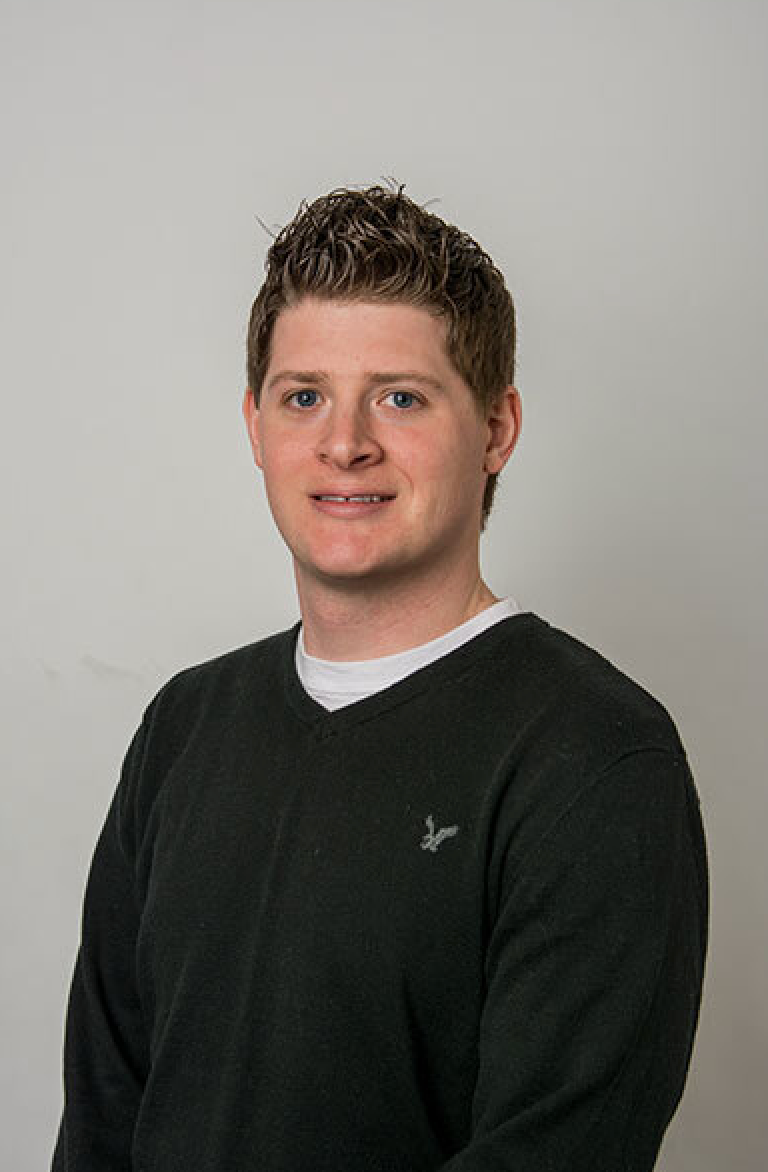
Chandler Withington, once the head golf professional at Hazeltine, now focuses on storytelling through his hand-drawn golf art.
Courtesy photo
It was supposed to be a quick cup of coffee. Thirty minutes, maybe? But Chandler Withington loves to talk, especially about golf. But also on Nothing. And it’s contagious. We sat there for 90 minutes.
We discussed golf course architecture. The Ryder Cup. The Lido. Movies. Hockey. Books. (He loves books.) But mostly we talked about how a golf professional at one of the Midwest’s most prestigious clubs quit his job and became a full-time artist.
It was a gamble, and Withington uses several cinematic analogies or references to explain it. He considers himself a historian and storyteller at heart, so naturally his own tale is easy to tell.
“It’s like my love letter to golf,” he says.
WHEN Withington, 45, was a child, his father would take him to Major League Baseball parks across the country and he fell in love with their timeless architecture. Tiger Stadium. Candlestick Park. The SkyDome. No two were the same. But despite his love for architectural engineering, Withington chose the path of a golf professional. A PGA member since 2006, Withington was an assistant professional at Merion and Seminole before being named head professional at Hazeltine National in Chaska, Minnesota, in the fall of 2012.
He thought he would stay there until he was 70, but it wasn’t just one thing that caused his professional life to take a turn.
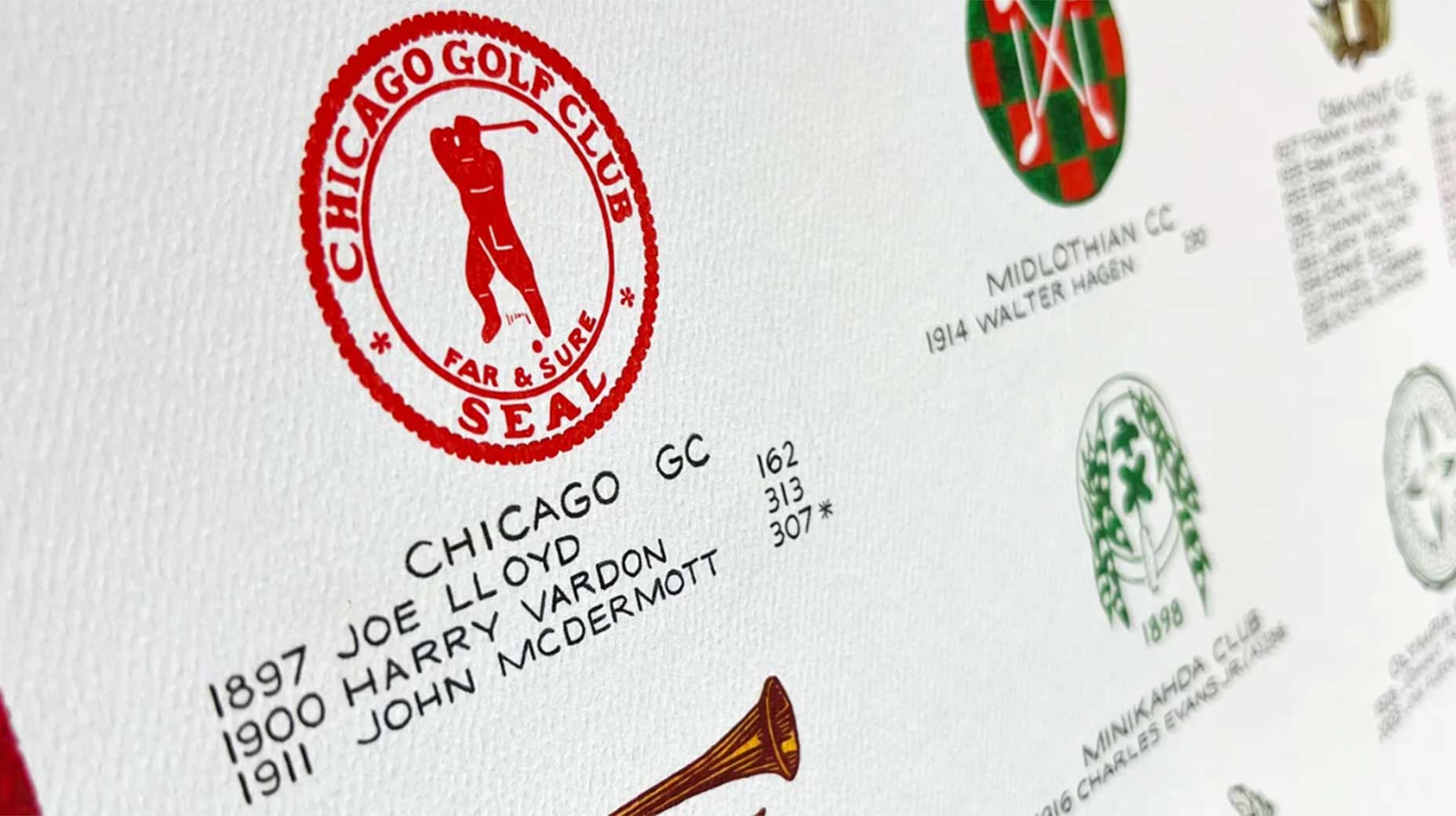
Courtesy photo
In 2018, his wife, Maureen, had complications after the birth of their third daughter. Everything went well, but fear made Withington think differently about what’s important. So he spent most of this winter at home instead of traveling or organizing trips for members, but he also needed something to keep him busy, especially during Minnesota’s long, cold winters.
He decided to draw a map of the course of Merion, his former club, and in the remaining white space he scribbled some trophies and names. He sent it to his friend John Sawin, a Merion member and director of golf at Pebble Beach. Sawin loved it; he said Withington should create something for them for 2019, as Pebble was hosting the US Open that year.
The wheels kept turning. Withington thought about what he could do next and how he could make his new hobby a topic of discussion.
“I kind of had this vision of drawing the history of the U.S. Open,” Withington said. “I just wanted to have Wikipedia on my wall. I wanted a quick reference, and again I wanted something to do. So I wondered if I could draw all the US Open logos and draw the winners underneath, and if it was useful I would hang them in my office.
The drawing of the U.S. Open – he uses Faber-Castell polychrome colored pencils – took three months, or, by Withington’s estimates, well over 250 hours. Below all the logos are the years each club hosted, the winner and the winning score. Resizing and moving the logos within the poster’s 24 x 36 inch frame was a tedious process. After the book was completed, he contacted his friend Tom Coyne, a writer who was traveling across America playing US Open courses for an upcoming book. Withington asked if he could distribute them as gifts to these clubs. The reception surprised him.
“Man,” Coyne said, as Withon recalls, “people love them.”
This was exciting, but Withington, who did not yet have a proper license, quickly rushed to clarify his intention to a certain governing body. He contacted the USGA to tell them he was not selling them for profit, but was simply giving them away as gifts.
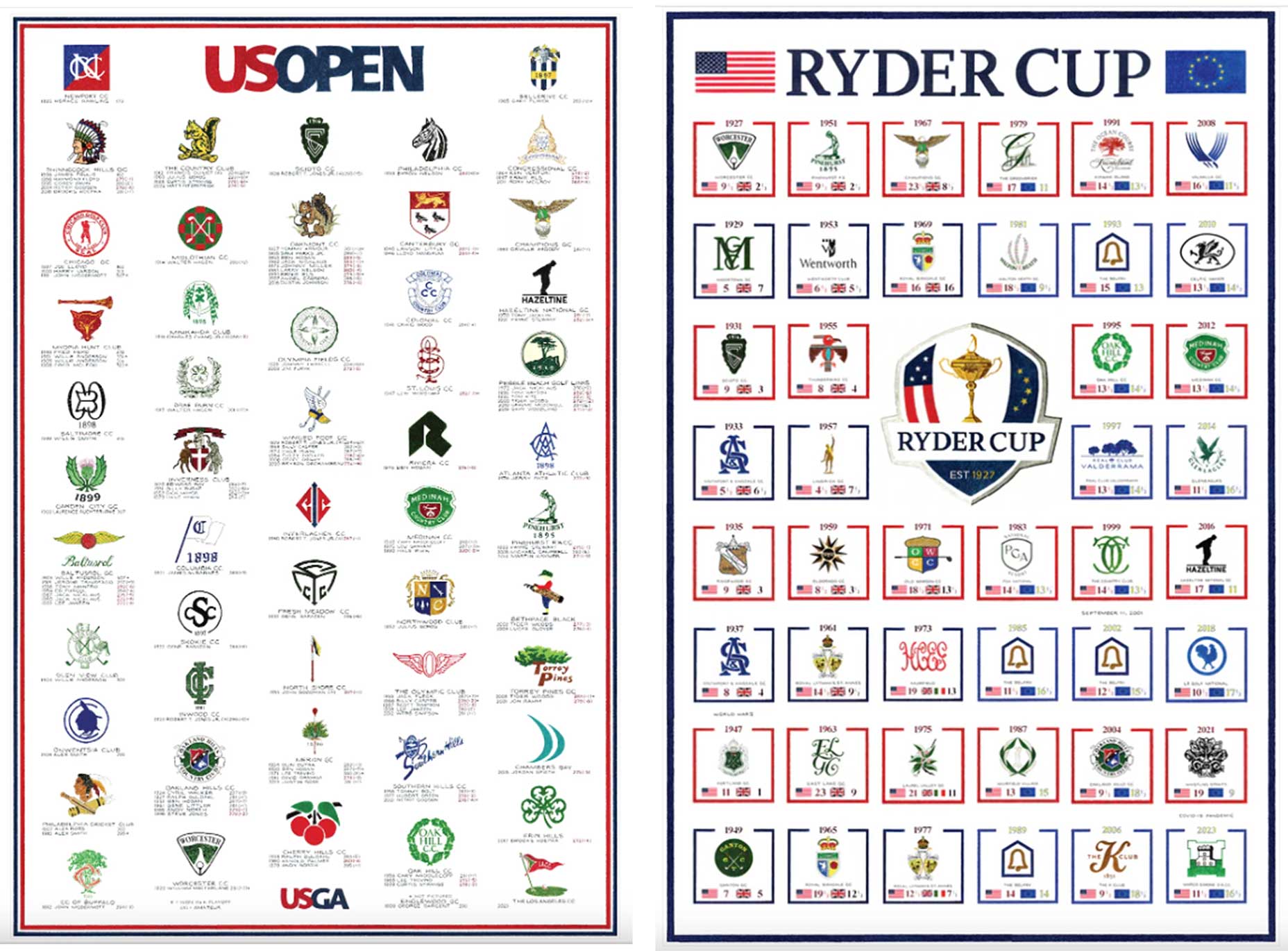
Courtesy photo
Meanwhile, at work, where Withington spent up to 90 hours a week, demands were increasing, as was stress. His children were getting older too.
One evening, Withington was watching “Back to the Future” with one of his daughters (reference film #1), when it made him nostalgic. He started scrolling through his wife’s Instagram feed and noticed he was in a few photos – just Maureen and the girls. He was usually at work.
“And you realize there are more people who want to spend time with you than just work,” he said.
His last day at Hazeltine was September 19, 2021. At the time, he didn’t stop to focus on his art. The plan was to find a solution. Drawing was still just a diversion, but two months later Golf summary published an article about Withington’s new hobby. This was well received and helped him think: Can I actually do this?
In February 2022, Withington presented his wife with a business plan. She’s a good saver, Withington says, so it was her financial skills that allowed her to give it a try before having to spend large sums of money. He said it was like in “Field of Dreams” (Reference Movie #2), where Kevin Costner’s character’s wife supports him on his crazy adventure, no matter how crazy it may seem.
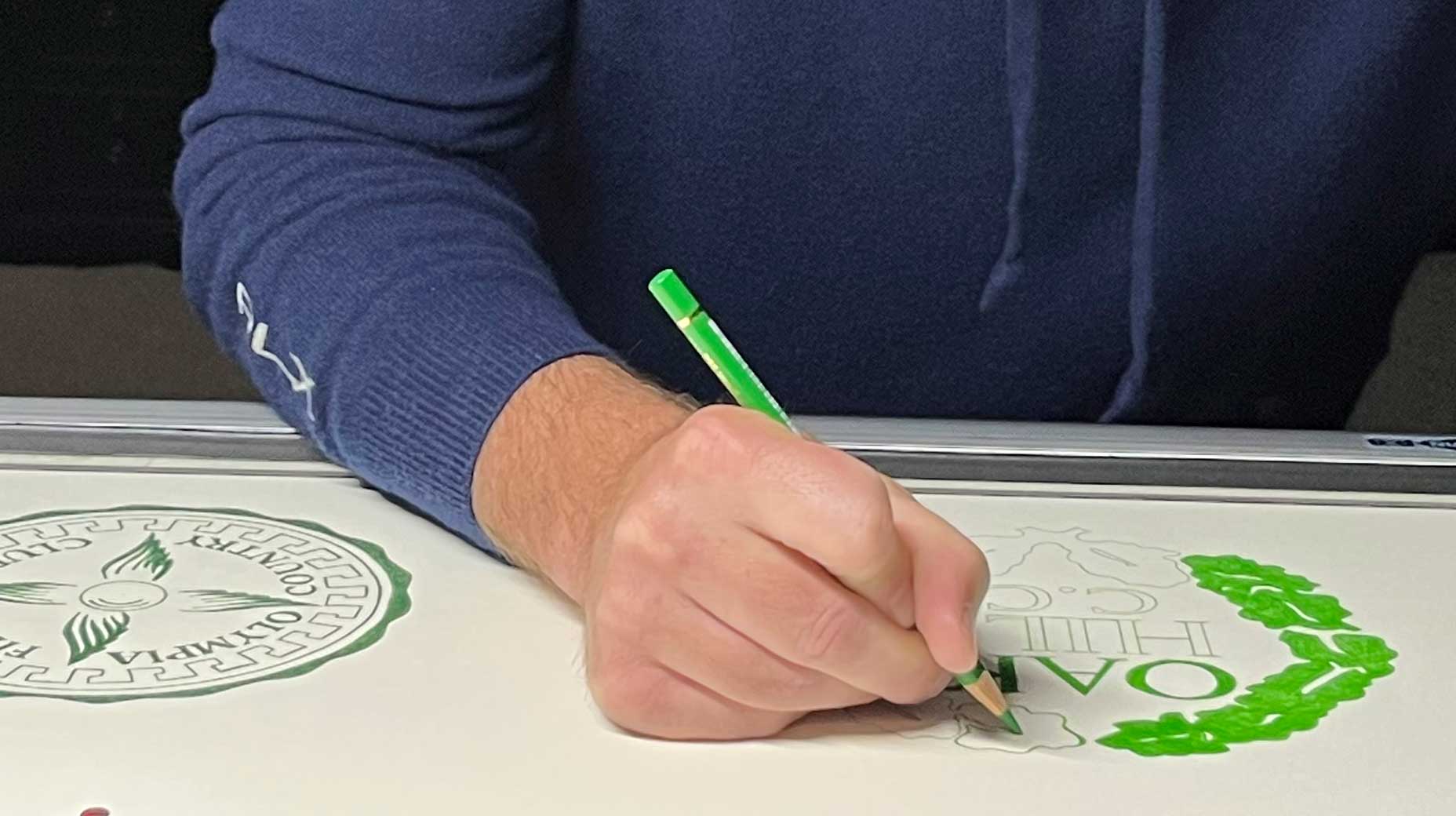
Courtesy photo
Withington wants to come back to the USGA to talk about licensing, and he also asked about a special drawing he did with the Curtis Cup at Merion. It was already over when the USGA told him he would need permission from clubs to use their logos, which, as Withington was about to find out, was not easy to obtain. This chase ended in June and, in July, he began the next one, even more ambitious: to have the drawing of lots in the history of the US Open approved by all the clubs, which, for essential, had never been done before.
“And there are 51 clubs,” he said. “So it was like a big treasure hunt.”
It was like “The Wizard of Oz” (movie reference No. 3), Withington said, in which the quest to get the approvals (i.e. meet the wizard) obstacle was followed of another. And another.
Fortunately, through his time in golf, Withington knew many of the pros or general managers. Or pros who knew pros. Or friends who knew pros who knew members who knew pros.
“So I was a 24/7 politician,” he said. “As soon as we get a ‘no,’ it’s all gone.”
He sent emails and created a PowerPoint presentation. He kept different charts on the wall to track progress, constantly updating where he was with each club in the approval process. Finally, he started checking them off. One element that helped him, he said, was the classic, tasteful look of his hand-drawn posters. This style was unlikely to offend some of the older, more traditional clubs. Additionally, his art told a story and celebrated these historic places.
“So, starting in July, I said to myself: if we could get these 25 clubs, these would be the most likely to say yes,” he said. “Maybe we can make the snowball move.”
A whirlwind eight months after he started, he got final approval. Her Brand Archive 22 officially launched in December 2022.
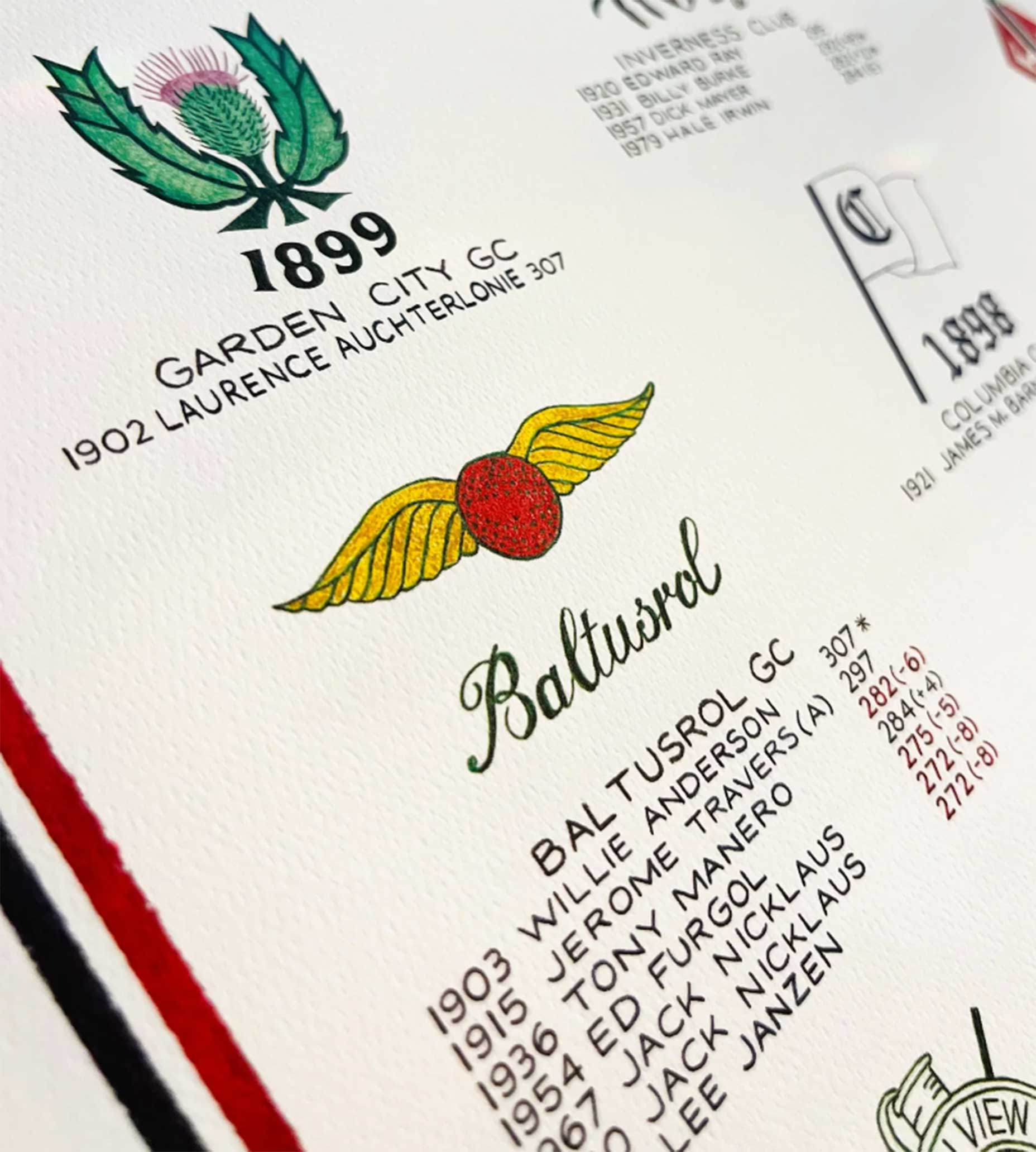
Courtesy photo
Withington’s posters are meticulously drawn. It doesn’t trace anything. He spends hours researching and studying photos from every angle to ensure every detail is perfect. He is also proud of it. The images may be blurry and some minor details are difficult to make out in the paintings, but his careful pencil strokes bring people even closer together. They can distinguish names, distinguish key characteristics. The goal is to get them to stop, look and talk. Not just a glance as they pass by.
Withington has created more artworks since, all of which required the same laborious approval process. He sold his US Open and PGA Championship prints at those major tournaments over the summer (you can find him in the merchandise tents signing them) and his Ryder Cup drawing is also a favorite. (You can shop her collection online here.)
He also wants to continue the evolution. Withington would like to get to a place where other artists work for his Archive 22 brand, where he could delegate work based on an artist’s strengths. In the near future, he wants to write newsletters for subscribers and draw more spreads focused on Stanley Cup winners and developments in the NHL. More golf too.
“That’s the power of logos,” he says. “They unlock the story. Where are you from? What do you like? Where were you? Who is your favorite player? Getting people talking about golf is where it all started.


